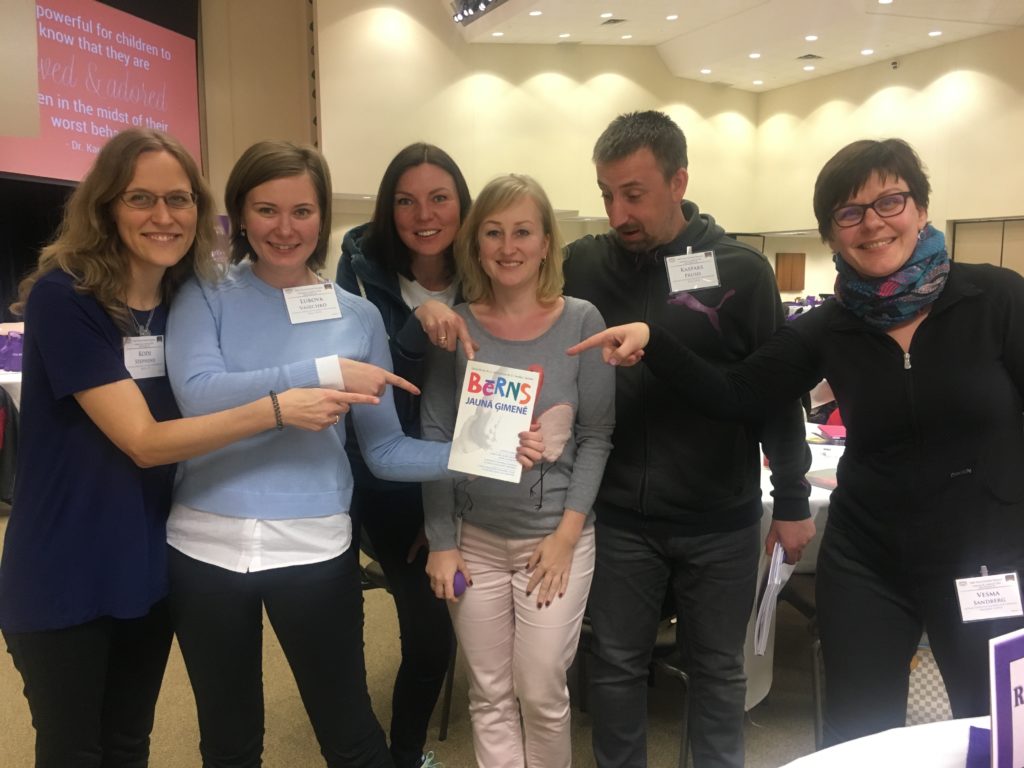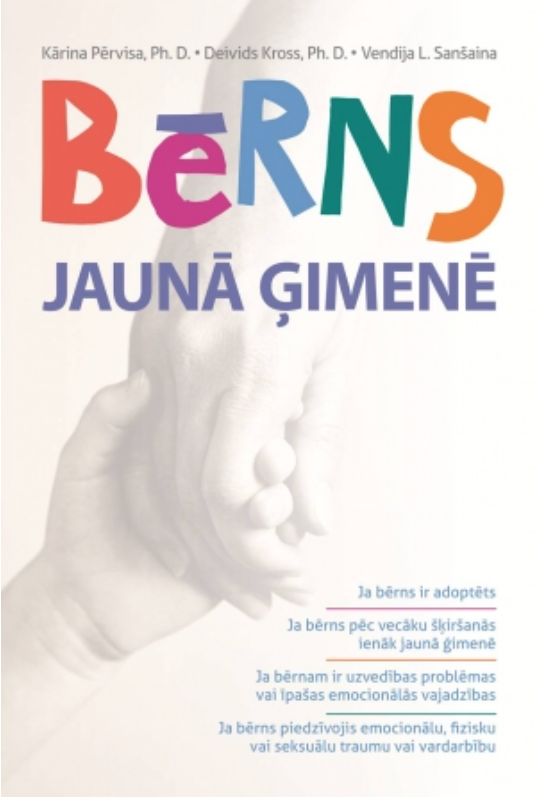by: Emmelie Pickett
Here at the Karyn Purvis Institute of Child Development, we often say that we are learning to change the world for children – and we do mean the world. Sadly, there are vulnerable children across the globe needing trust-based relationships to help them heal. We design trainings and resources, but we rely on our international partners to help us take Trust-based Relational Intervention® (TBRI®) to non-English speaking countries.
Vesma Sandberg, a TBRI® Practitioner, recently worked to have our book, The Connected Child, translated into Latvian. The book was released in February 2018, and we sat down with Vesma to learn more about her experience through the translation and publication process.

How did you learn about TBRI® and the KPICD?
When we adopted eleven years ago in Riga, Latvia, there were very few resources available for understanding children with trauma. We had raised two biological children, but this experience did not help us when we adopted. After a year of intense struggles and feeling like we were failing, somebody gave us two books – “The Connected Child” and “Parenting the Hurt Child”. “The Connected Child” opened a whole new universe of childhood trauma and how to raise a child who has been deeply hurt. Over the years, I have been researching more Karyn Purvis Institute and TBRI® materials on my own. I am also a translator and have been doing a lot of translation for Theraplay Latvia, which also uses some KPICD materials.
Describe your work with children from hard places.
Four years ago, several adoptive/foster parents came together with the idea of mobilizing Christian churches in Latvia to get involved in orphan care in a more organized, conscious way. Latvian Christian Alliance for Orphans was formed. Since then, we have been organizing Orphan Sunday in churches and general society every November in Latvia. Orphan Sunday includes seminars that explain different outside family care forms to those interested, and it brings local churches and municipalities together to build bridges and get involved. We also provide support groups for adoptive/foster families, train church groups serving in orphanages and continue training and supporting all those who want to give a home to a child from a hard place.

Why do you think The Connected Child needed to be translated into Latvian?
There are almost no tools for families doing the seemingly impossible task of caring for children with very deep complex trauma. Latvia is part of the European Union (EU), which means new regulations and nearly eliminating institutional care. This is a time for great change in our country where we are moving from an institutional care system to a primarily foster/adoptive family system. However, all of the existing families and new families need to be able to care for their hurt children in an informed way. The Connected Child seemed to be the best first step toward that goal.
What was the first step in the process of having the book translated and published?
The first step was a dream. Members of Latvian Christian Alliance were calculating the cost of having such a book published. A friend from the US, Kodi Stephens, had received an agreement from the publisher McGraw-Hill expressing readiness to sell the copyright to a publisher in Latvia. An idea occurred to try to take the book to the biggest publishers in Latvia and try to “sell” the idea that this is an empty information niche, and that they would be the first ones to fill it. The first publisher we approached was the biggest in Latvia – Zvaigzne ABC, who deals with the most popular local and international titles. We met with the head of the Foreign Language book department, presented the book, and made a case that there is very little available for families taking care of children with trauma. We tried to broaden the subject matter by explaining that this book would be good for any parent raising a child with trauma, not just those with adopted or foster children. After brief consideration, the publisher sent us a letter about acquiring the copyright from McGraw-Hill and moving forward with publishing the book.
What challenges, if any, did you encounter along the way?
The biggest challenges were around the book title and deadlines. The deadline got postponed by about six months, so we could not present the book at an event where we were planning to present it. But, it actually worked out in our favor in the end, since we were able to present it at another conference. Another challenge was the book title – the publisher was not obligated to consult us, but they graciously did. We were not happy with any of their choices, but they kept their title “A Child in A New Family” anyway. So, we have grown accustomed to it now.
How long did the translation take from start to finish?
We started negotiations in December of 2016 and had the book in our hands in February of 2018.

If others want to have The Connected Child translated into their language, do you have any tips or advice for them?
If you are from a European country, especially EU zone, the push to end institutional care is great, so raising a child with trauma is a relevant topic. Also, it is a hot topic in such outside EU zones as Russia and Ukraine. However, I am not aware what materials are available in Russian language.
Do not narrow the topic of the book down to applying only to adoptive/foster children or children from institutions. Many children have experienced different kinds of emotional trauma. When you present it to the publisher, make the subject as broad as possible. They will read the book, of course, before making a decision, but it helps to get them interested. Talk about the big picture in your
country – changes the government is making and how those changes are influencing the population, and that this material is very relevant and unavailable to people. If the number of foster/adoptive families in your country is great, make sure you emphasize how many people may buy the book.
Thanks so much, Vesma!
Click here to purchase The Connected Child in Latvian.
Would you like to see The Connected Child translated in a new language? Contact us for information about obtaining the book’s international publishing rights.
This is a great book for helping adults to make a difference in a traumatized child. Every country
needs this book in their language today. No child deserves trauma in his/her life and 1 out of
every 4 children experience some kind of serious abuse/trauma before adulthood. Many victims
never tell until they are adults and then maybe they will tell only one person. Common sense and
statistics tell us that there are many who never tell any one, but keep their deep dark secret to
them selves and suffer a life of anger, hate, low self esteem and suicidal thoughts…until their deaths.
Do you have any plans or thoughts on how to help the children from Ukraine who have experienced such terrible trauma? I am a TBRI Practitioner who knows how much your knowledge and connections could help these children and families.